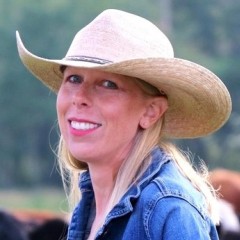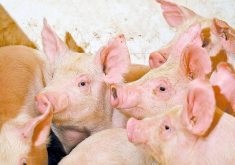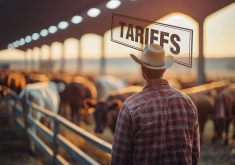Aseries of E. coli and listeria outbreaks and other food safety incidents has increased pressure on producers to do more and more — even though Canada has one of the safest food supplies in the world.
And that’s true of the Verified Beef Production (VBP) program, the country’s on-farm food safety program for beef producers.
The program already has standard operating procedures covering animal health management, feed and water, shipping, pesticide control, manure management, and staff training and communication. In January, it was announced three new modules — biosecurity, animal care, and environmental stewardship — will be added.
Read Also

Horns aren’t unlocking anytime soon on livestock transport standards
Standards good enough meet the definition of “humane” animal transportation still vary widely between what what industry wants, what animal rights advocates want and, between the two, what federal regulators decide is good enough.
“We are excited to be working with industry on the VBP-plus program and look forward to additions which are low-cost or no-cost practical solutions,” said Shannon Argent, VBP co-ordinator for Alberta.
Pilot versions of these components will be rolled out in the near future, and will be based on the recommendations of a steering committee, which has representatives from government, academia, processors, retailers, the veterinary profession, and several beef sectors.
This type of information is increasingly being sought by major corporations, such as McDonalds, which is piloting its “sustainable beef” program in Canada.
Added benefits
Some producers may be turned off by the idea of doing more paperwork, but many are already recording this information, albeit in numerous places — notebooks, calendars, or scrap pieces of paper.
But keeping clear, concise records in a single system has several benefits.
First, better record-keeping can help identify ways to lower costs or boost productivity.
Second, having detailed records can also allow a ranch to sell into a branded beef program with specific protocols — such as no added hormones or antibiotics.
Being enrolled or trained in the VBP program also makes ranches eligible for Growing Forward 2 funding of up to $5,000 (covering 70 per cent of eligible costs). Among the items eligible for funding are squeeze chutes with neck extenders, individual animal weigh systems, medical treatment software, and electronic animal thermometers.
How it works
The program is records based and has three stages. The first stage is enrolment/training when the producer completes the online or in-person course. (Once enrolled or trained in the VBP program, producers are eligible to apply for Growing Forward 2 funding.)
The second stage is pre-registration. During this step, a cow-calf producer keeps records for six months (three months for feedlots) and then undergoes a third-party audit.
Many producers cringe when the word “audit” is brought up — picturing grim-faced men with clipboards and the prospect of suddenly being forced to change practices.
But the VBP audit is more a learning experience, a review of the program’s “dos” and recommendations.
“The program lays out best practices for producers with the goal of keeping drug residues and foreign objects out of the food chain,” said Argent.
Every time an animal receives an injection, a record is created of what was given, the route of administration (intermuscular or subcutaneous), the date, what animal received the injection, how much was given, and the withdrawal time of the medication. Producers are encouraged to use detectable needles and if by chance a needle was broken while giving the injection, then the producer fills out a simple form for their record book. If that animal is ever sold, the next owner is informed of the broken needle. Records are also kept for medicating feed or water, herbicide/pesticide use on hay or pasture land, and animals that are sold and shipped, purchased or died.
The audit is also a chance for producers to add to their education by spending time with an industry professional who has audited many other operations. For example, they might learn more about herbicide and pesticide withdrawal times and tips on using the Compendium for Veterinarian Products (CVP) app for iPhones that give producers the medication label directions right on their smartphone.
The final stage is registration. Once registered, a producer has to submit a sample of records or self-declarations annually to maintain registration. After the initial audit, a full audit is again required in the ninth year of registration and the cycle resumes.
Not alone
The U.S. has a program similar to the Verified Beef Production program called Beef Quality Assurance. The protocols are similar, except the BQA program is audited every five years on a national level to gauge “progress the industry makes on a variety of production issues,” according to the BQA website. The BQA program also has one additional module, the Transportation Quality Assurance Program, for cattle and hog transportation.
With more and more consumers demanding more detailed assurances that their food is safe and wanting to know more about how it was produced, the VBP program could be used as an avenue to provide this information.
By pairing Verified Beef Production with other programs, such as BIXS 2.0 and DNA Traceback, consumers may one day be able to scan a QR code on a meat package in the store and find out everything about that animal, right down to what it ate on a daily basis.
“The program is using industry support to build on the VBP platform, using existing materials whenever possible and identifying practices easily adaptable by producers,” said Argent.
For more information about VBP, visit the program website.
















